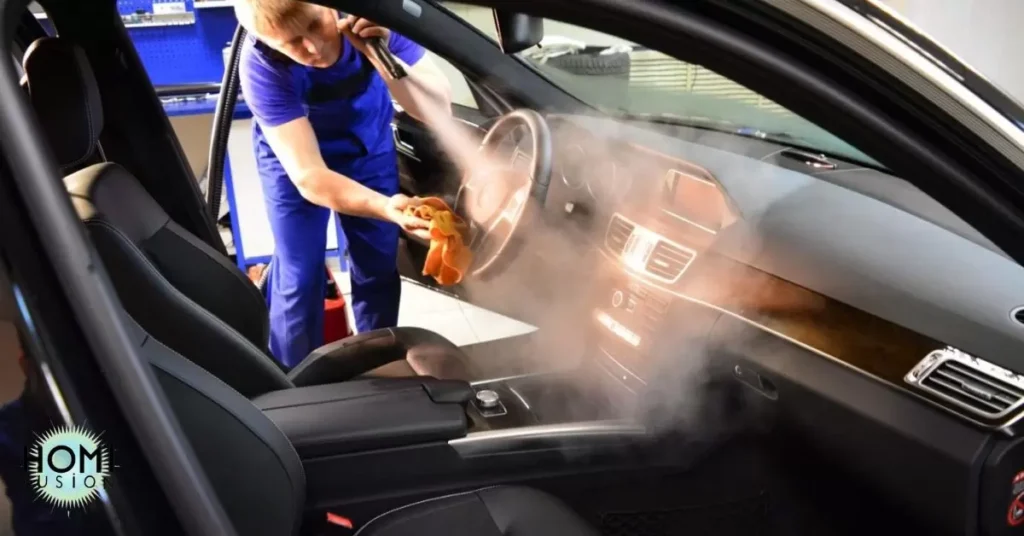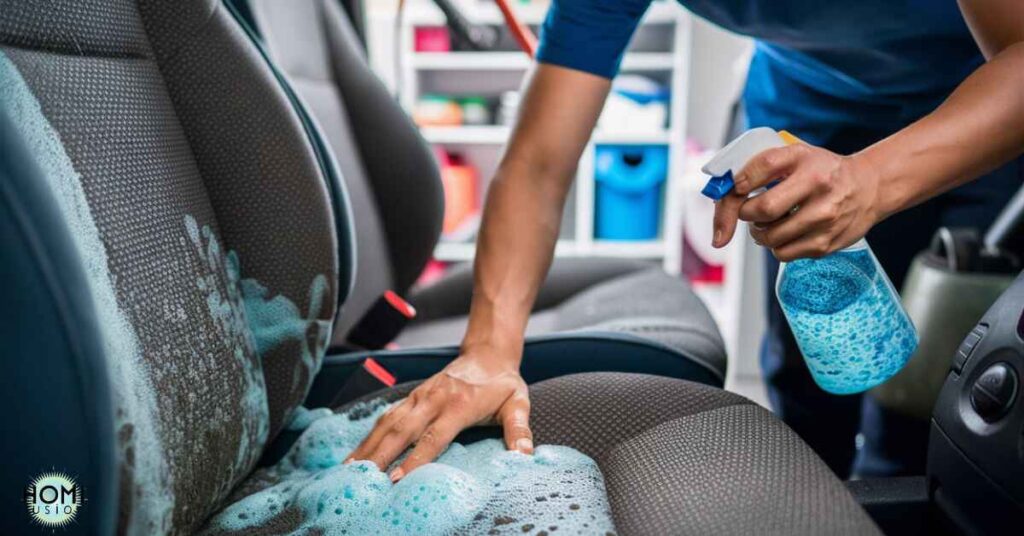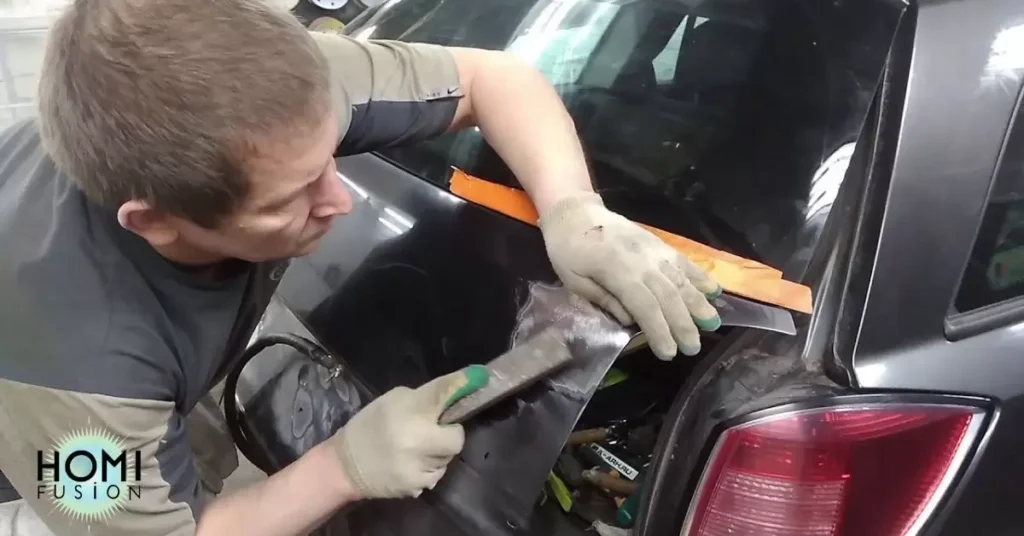Cleaning fabric car seats at home is a simple way to refresh your vehicle’s interior. By following easy steps, you can restore your seats to a like-new condition without professional help. Using basic tools like a vacuum, upholstery cleaner and scrub brush, you can efficiently remove dirt and stains, leaving your car clean and inviting.
Begin by vacuuming the seats to remove debris and pet hair. Treat stains with upholstery cleaner and a scrub brush, and then apply a cleaning solution to lift embedded dirt. Wipe dry and apply a protective coating to maintain cleanliness and freshness.
How Often to Clean Cloth Car Seats
Cleaning your cloth car seats regularly is important for maintaining their appearance and durability. Aim to vacuum your seats at least once a week to remove surface debris like dirt, crumbs, and pet hair. More thorough cleaning should be done every few months, especially if your seats are frequently exposed to spills or stains.
This routine upkeep helps prevent dirt from becoming embedded in the fabric, which can lead to discoloration and wear over time. By staying consistent with cleaning, you can keep your cloth car seats looking fresh and extend their lifespan.
Also take a look at: WHICH FAIRYTALE WAS THE FIRST GINGERBREAD HOUSE INSPIRED BY?
Identify the Type of Fabric
Identifying the type of fabric used for your car seats is essential before cleaning. Check your car manual or manufacturer’s information to determine the fabric material. Common types include nylon, polyester, or blends of these materials. Knowing the fabric type will guide you in selecting the appropriate cleaning products and methods. This information helps ensure that you clean your car seats effectively without causing damage to the fabric.
Types of Cloth Car Seats
Cloth car seats can be made from various materials, each requiring specific care:

Nylon
Nylon is a common fabric used for car seats due to its durability and resistance to abrasion. It is known for its strength and ability to retain its shape well over time. Nylon car seats are relatively easy to clean and maintain, making them a popular choice for vehicle upholstery.
Polyester
Polyester is another popular fabric choice for car seats, known for its soft texture and durability. It resembles microfiber or microsuede upholstery, offering a comfortable feel. Polyester car seats can be more challenging to clean due to their textured surface, requiring gentle care to avoid damaging the fabric.
Test a Cleaning Solution in an Inconspicuous Area
Before using a cleaning solution on your car seats, it’s important to test it in a hidden or inconspicuous area first. Choose a small spot on the seat where any potential discoloration won’t be noticeable. Apply a small amount of the cleaning solution to this area using a cloth or sponge.

Allow the solution to sit for about 10-15 minutes. Check the spot for any adverse reactions like discoloration or damage to the fabric. This test helps ensure that the cleaning solution is safe to use on your car seats without causing unwanted effects.
What You’ll Need
To clean your car seats effectively, you’ll need basic equipment and materials. Equipment includes a vacuum cleaner with upholstery attachments and a scrub brush for stains. Materials required are upholstery cleaner, water for dilution, and microfiber cloths for wiping and drying. These tools and supplies will help you achieve a thorough and successful cleaning of your fabric car seats.
Equipment / Tools
- Vacuum cleaner with hose and upholstery brush
- Scrub brush (soft-bristled)
- Microfiber cloths
- Spray bottle
- Portable steam cleaner (optional for deep cleaning)
Materials
- Commercial carpet and upholstery cleaner
- Oxygen-based bleach (for tough stains)
- Water
- Fabric protector (optional for stain prevention)
Tips to Keep Your Cloth Car Seats Clean Longer
- Use seat covers to protect car seats from spills and stains.
- Vacuum car seats regularly to remove dust, crumbs, and debris.
- Apply fabric protectant spray to create a barrier against spills.
- Clean stains promptly with a mild detergent and water solution.
- Avoid eating messy foods or drinking beverages in the car.
- Use a lint roller to remove pet hair from cloth seats.
- Keep a small trash bag in the car to dispose of wrappers and trash.
- Use seat cushions or blankets for added protection during long trips.
- Park in shaded areas to prevent sun damage and fading of fabric.
- Rotate seat covers periodically to ensure even wear and tear.
- Use a fabric refresher spray to keep car seats smelling fresh.
- Follow manufacturer’s instructions for cleaning and maintenance.
Apply the Cleaning Solution to the Fabric
Applying the cleaning solution to your fabric car seats is a crucial step in the cleaning process. Start by mixing the upholstery cleaner with water according to the product instructions. Transfer the solution to a spray bottle for easy application.

Spray the solution evenly onto the seat surfaces, focusing on stained or dirty areas. Use a soft-bristled scrub brush to gently work the cleaner into the fabric, helping to lift dirt and grime. This method ensures thorough cleaning and helps restore the appearance of your car seats.
Instructions
Here are simple instructions for cleaning your fabric car seats: Start by vacuuming to remove debris. Treat stains with upholstery cleaner and a scrub brush. Apply cleaner evenly, scrub gently, and wipe dry before allowing seats to air dry completely.
Vacuum the Seats
Before cleaning your fabric car seats, start by thoroughly vacuuming them to remove loose dirt, debris, and pet hair. Use a vacuum cleaner with suitable attachments, such as a crevice tool and upholstery brush, to reach into crevices and lift particles from the fabric.
Vacuum in a methodical manner, going over the entire seat surface and paying special attention to seams and corners where dirt tends to accumulate. This initial step helps prepare the seats for deeper cleaning and prevents dirt from being pushed further into the fabric during the cleaning process.
Pre-Treat Stains
Identify any visible stains on the fabric car seats and pre-treat them before applying a general cleaning solution. Use appropriate upholstery cleaner designed to target specific stains like food spills, grease marks, or pet stains.

Apply the cleaner directly onto the stains and gently work it into the fabric using a soft scrub brush. Allow the pre-treatment to sit for the recommended time as per the cleaner’s instructions to maximize its effectiveness in lifting and loosening stubborn stains before proceeding with the overall cleaning process.
Apply the Upholstery Cleaner Solution
Prepare a cleaning solution suitable for fabric upholstery by mixing a commercial carpet and upholstery cleaner with warm water in a spray bottle.
Follow the manufacturer’s guidelines for the correct dilution ratio. Lightly mist the entire seat with the cleaning solution, ensuring not to oversaturate the fabric. This step helps break down dirt and grime embedded in the fabric fibers, making it easier to lift away during scrubbing.
Scrub Away the Dirt
Using a stiff-bristled scrub brush, gently scrub the fabric seats in circular motions, focusing on areas with visible stains or heavy soiling. Work systematically from one section to another, ensuring thorough coverage of the entire seat surface. The scrubbing action helps dislodge dirt and lifts it to the surface for easier removal.
Wipe Away Excess Moisture
After scrubbing, use a clean microfiber cloth to wipe away excess moisture and lift dirt from the fabric. This step helps absorb the remaining cleaning solution and prevents streaking or watermarks on the seats.
Allow the Seats to Dry
Allow the fabric car seats to air dry completely before using the vehicle. Open windows or use fans to promote airflow and expedite drying, especially in humid conditions. Avoid sitting on or using the seats until they are fully dry to prevent re-soiling and to ensure the cleaning process is effective.
Add a Protective Coating
Once the seats are dry, consider applying a fabric protector to provide a barrier against future stains and spills. Choose a suitable fabric protector spray and follow the manufacturer’s instructions for application. This protective coating helps maintain the cleanliness and appearance of the fabric seats for longer periods between cleanings.
Frequently asked questions
What should I do if there is a tough stain on the fabric?
For tough fabric stains, use a stain remover or upholstery cleaner promptly. Blot the stain gently from the outside in and repeat if needed, or seek professional cleaning help.
How often should I clean the fabric car seats?
It’s recommended to clean fabric car seats every few months or as needed based on use. More frequent cleaning may be necessary if you have pets, children, or regularly eat in the car.
Is there a way to avoid stains in the future?
To prevent future stains on fabric car seats, use fabric protectors to create a barrier against spills and dirt. Avoid eating or drinking in the car and consider using seat covers for added protection.
Is there a home remedy I can use to clean my fabric car seats?
Yes, you can use a mixture of warm water and mild laundry detergent to clean fabric car seats at home. For tougher stains, adding white vinegar or baking soda to the solution can help.
Can I use a steam cleaner to clean my fabric car seats?
Yes, you can use a steam cleaner to effectively clean fabric car seats. Ensure the steam cleaner is suitable for upholstery and follow the manufacturer’s instructions for safe usage.
Conclusion
Cleaning fabric car seats at home is a straightforward process that can greatly improve the appearance and comfort of your vehicle’s interior. By following simple steps like vacuuming, pre-treating stains, and applying a cleaning solution, you can effectively remove dirt, debris, and stains from fabric seats. Remember to allow the seats to dry completely before using the vehicle and consider applying a protective coating to prevent future stains.
Regular maintenance and cleaning, including spot treatments for tough stains, will help prolong the cleanliness and longevity of your fabric car seats. With basic tools and techniques, you can achieve professional-looking results without the need for professional cleaning services. Keeping your fabric car seats clean not only enhances the aesthetic appeal but also contributes to a more enjoyable and pleasant driving experience for you and your passengers.







